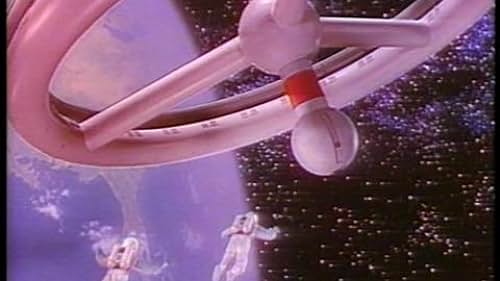Walter Lantz(1899-1994)
- Producer
- Director
- Writer
Walter Lantz was an American cartoonist, animator, film producer, and film director from New Rochelle, New York. He was the eponymous founder of the animation studio Walter Lantz Productions (1928-1972). The studio was initially famous for continuing the Oswald the Lucky Rabbit film series from 1928 to 1938. Lantz later found more success with animated film series featuring Andy Panda (1939-1949), Woody Woodpecker (1941-1972), and the penguin Chilly Willy (1953-1972).
In 1899, Lantz was born to Italian immigrant parents in New Rochelle, New York. The family name was originally "Lanza" before being changed to "Lantz". His parents were named Francesco Paolo Lanza and Maria Gervasi. In 1911, Lantz completed a mail-order drawing class. In his teen years, Lantz worked as an auto mechanic while continuing to draw as a hobby. He found a wealthy patron by the name of Fred Kafka, who agreed to finance Lantz's studies at the Art Students League of New York.
In 1915, the adolescent Lantz was hired as an animator by the animation department of the International Film Service studio (1915-1921). The department head was the director Gregory La Cava (1892-1952), while the studio's owner was the businessman William Randolph Hearst (1863-1951). Lantz eventually left the studio and was hired by the animation studio Bray Productions (1912-1928). In 1924, Lantz created his own film series, called "Dinky Doodle". Also in 1924, Lantz became the new head of production at Bray. He was chosen as the replacement of Vernon Stallings (1891-1963).
Lantz moved to Hollywood, California in c. 1927/1928, in hopes of setting up his own studio. He was short of funds, and he initially supported himself through a series of odd jobs. He worked briefly as a member of the production team of director Frank Capra (1897-1991), and as a gag writer for Mack Sennett (1880-1960). He was then hired by producer Charles Mintz (1889-1939) to help continue the then-popular Oswald the Lucky Rabbit film series. The films were distributed by Universal Pictures, but its studio head Carl Laemmle (1867-1939) wanted to set up his own animation subsidiary. Lantz instead convinced Laemmle to fund the creation of his own animation studio. Lantz's initial production team included the animator Tom Palmer and the musician Bert Fiske. Lantz soon managed to hire the innovative animator Bill Nolan (1894-1954), who was known for creating and perfecting the rubber hose style of animation.
Lantz continued producing animated short films for theatrical release until 1972. By that point, Walter Lantz Productions and DePatie-Freleng Enterprises were the last remaining American animation studios which still regularly produced theatrical animated short films. Lantz decided to shut down his studio due to rising production costs and diminishing profits. He continued to earn a living through licensing his characters for media use, and by selling his drawings and paintings to collectors. He served throughout the 1980s and the early 1990s in the advisory board of the National Student Film Institute. He died in March 1994 due to heart failure, at the age of 94.
In 1899, Lantz was born to Italian immigrant parents in New Rochelle, New York. The family name was originally "Lanza" before being changed to "Lantz". His parents were named Francesco Paolo Lanza and Maria Gervasi. In 1911, Lantz completed a mail-order drawing class. In his teen years, Lantz worked as an auto mechanic while continuing to draw as a hobby. He found a wealthy patron by the name of Fred Kafka, who agreed to finance Lantz's studies at the Art Students League of New York.
In 1915, the adolescent Lantz was hired as an animator by the animation department of the International Film Service studio (1915-1921). The department head was the director Gregory La Cava (1892-1952), while the studio's owner was the businessman William Randolph Hearst (1863-1951). Lantz eventually left the studio and was hired by the animation studio Bray Productions (1912-1928). In 1924, Lantz created his own film series, called "Dinky Doodle". Also in 1924, Lantz became the new head of production at Bray. He was chosen as the replacement of Vernon Stallings (1891-1963).
Lantz moved to Hollywood, California in c. 1927/1928, in hopes of setting up his own studio. He was short of funds, and he initially supported himself through a series of odd jobs. He worked briefly as a member of the production team of director Frank Capra (1897-1991), and as a gag writer for Mack Sennett (1880-1960). He was then hired by producer Charles Mintz (1889-1939) to help continue the then-popular Oswald the Lucky Rabbit film series. The films were distributed by Universal Pictures, but its studio head Carl Laemmle (1867-1939) wanted to set up his own animation subsidiary. Lantz instead convinced Laemmle to fund the creation of his own animation studio. Lantz's initial production team included the animator Tom Palmer and the musician Bert Fiske. Lantz soon managed to hire the innovative animator Bill Nolan (1894-1954), who was known for creating and perfecting the rubber hose style of animation.
Lantz continued producing animated short films for theatrical release until 1972. By that point, Walter Lantz Productions and DePatie-Freleng Enterprises were the last remaining American animation studios which still regularly produced theatrical animated short films. Lantz decided to shut down his studio due to rising production costs and diminishing profits. He continued to earn a living through licensing his characters for media use, and by selling his drawings and paintings to collectors. He served throughout the 1980s and the early 1990s in the advisory board of the National Student Film Institute. He died in March 1994 due to heart failure, at the age of 94.






































